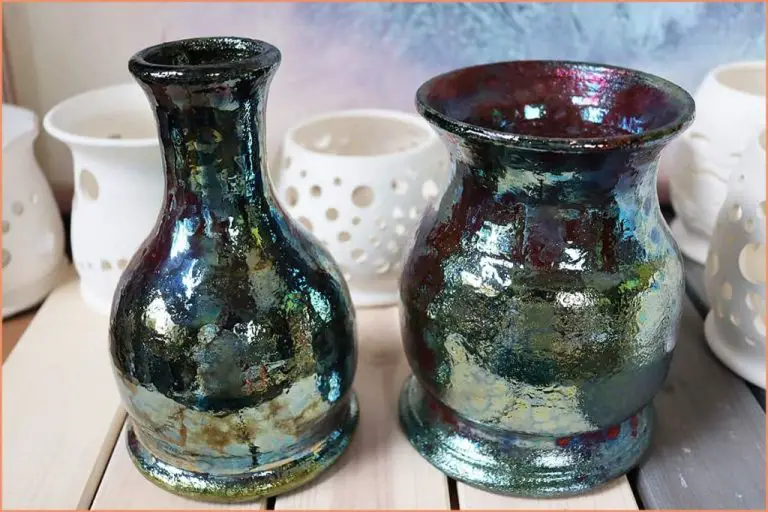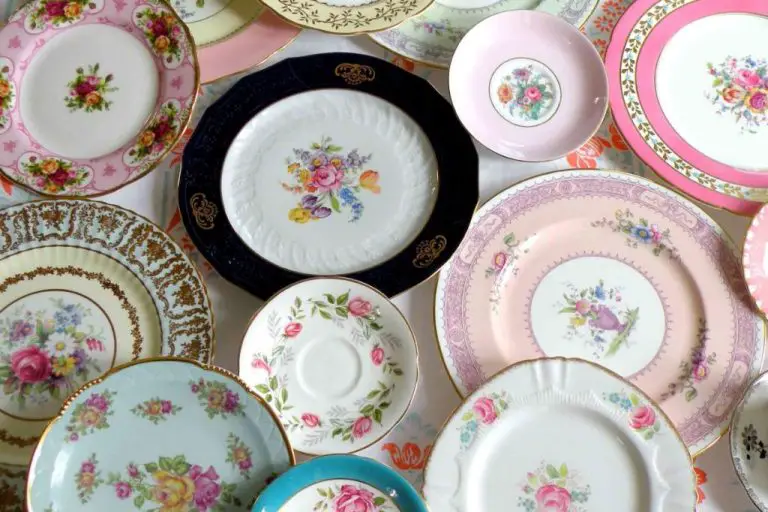How Do You Cone Up And Down Clay?
Coning clay is the process of shaping clay into a cone or cone-like shape, either to make a finished piece or as part of constructing a larger form. It is a fundamental technique in pottery and ceramic arts. Coning can refer to shaping clay up into a tall cone shape or down into a wide, truncated cone shape.
There are several reasons a potter or ceramic artist may want to cone clay:
- To make a basic cone shape as a finished piece
- To form the walls of cylinder or vase shape by raising the clay up into a cone
- To create a base for a pot or vessel by coning the clay down into a sturdy, flared shape
- As part of centering clay on the wheel to form an even cylinder
Mastering coning techniques allows ceramic artists to create elegant forms and structurally sound pieces. This article will walk through the steps and methods for coning clay up and down.
Tools Needed
There are three essential tools for shaping clay: the wire tool, rib, and knife. Having these basic tools on hand will allow you to center, raise, refine, and detail your clay creations.
Wire Tool
The wire tool, also called a needle tool, is a thin metal rod tapered to a point at one end and bent into a handle at the other. Wire tools allow you to slice cleanly into the clay wall and smooth seams and joints. They are indispensable for opening and centering clay as well as carving fine details.
Rib
Ribs are thin, flexible strips of wood or rubber used to compress, smooth, and shape clay. They come in a variety of shapes and materials. Ribs compress clay evenly and allow you to thin walls and refine shapes once the basic form is established.
Knife
A pottery knife has a thin, tapered steel blade with a wooden handle. It can trim excess clay from the base and undercuts as well as slice and score clay prior to joining. A knife allows for broader smoothing and shaping compared to the pointed wire tool.
Preparing the Clay
Before throwing clay on the pottery wheel, it’s important to properly prepare the clay through wedging and conditioning. Wedging involves cutting and kneading the clay to remove air pockets and create an even moisture consistency. Start by cutting off a workable sized chunk of clay. Then slam it down onto your wedging table and cut it in half. Fold the two halves together and slam down again while turning 90 degrees. Repeat this process, cutting and folding the clay in different directions until it has an even color and feels smooth and flexible. Avoid overworking the clay, as it can become too dry.
Conditioning clay involves letting it rest in plastic bags or under damp rags to achieve ideal moisture content. Wedged clay should feel cool, smooth, and pliable, similar to the consistency of human skin. If the clay is too wet, it will be sticky and prone to collapsing. If too dry, it will crack and be difficult to center on the wheel. Test moisture content by squeezing a ball of clay in your hand. Properly conditioned clay should hold its shape without cracking or oozing water. Allow clay to rest wrapped in plastic overnight if more conditioning is needed. Preparing clay properly before throwing ensures you’ll have the right consistency for successful forming.
Centering the Clay
Centering the clay on the pottery wheel is a crucial step in throwing pottery. It involves getting the clay positioned right in the center of the spinning wheel head, so it can be raised symmetrically into the desired shape.
Start by throwing a clay mound onto the center of the wheel head. Apply pressure with both hands on opposite sides of the mound to shape it into a rough cone shape. Then, using your thumbs, press a hole down through the center of the cone into the wheel head. This will help center the clay by creating a guide for it to follow.
Wet your hands and the clay with water. Then, place both hands on either side of the clay, applying even pressure as the wheel spins. Allow your hands to move up and down with the spinning clay, compressing it from both sides. The goal is to center the clay into a cylinder right above the wheel head.
Check for centering by looking at the clay from above, and make adjustments as needed. It takes practice to center clay smoothly and efficiently. Be patient and make minor changes to get the clay perfectly centered before raising the walls.
Opening the Clay
Once the clay has been centered on the pottery wheel, the next step is to open up the clay to form the interior cavity of the piece. This is done by using the fingers and thumbs to gently press into the top center of the clay, creating a hole. The key is to keep fingers together and apply even pressure downwards to gradually widen the hole.
As the hole opens up, support the exterior walls with the other hand to prevent them from collapsing inwards. Slowly pull fingers apart to expand the cavity, while allowing one hand to shape the interior wall and the other to support the exterior. Aim to open up the clay to the desired width for the type of piece being made. Don’t rush this process, as patiently opening the centered clay is what allows potters to successfully raise the walls and establish the interior space.
It’s crucial when opening the clay to maintain an even pressure and wall thickness throughout the process. Going too fast or applying uneven pressure can cause the piece to become off-centered or asymmetrical. Work slowly and methodically, gauging the thickness of the floor and walls as the interior is formed. The opened clay is now ready for the next steps of raising the walls and further forming the shape of the piece.
Raising the Walls
Once the clay has been centered on the wheel and opened up, it’s time to raise the walls. This process involves gently pulling the clay upwards with your hands while the wheel spins at a steady pace. The key is to raise the walls slowly and evenly. If one section goes up faster than another, the clay can become lopsided.
To raise the walls evenly:
- Keep one hand inside the clay, steadying the base as the other hand pulls up on the outside.
- Apply even, gentle pressure as you pull the clay upwards. Don’t pull too quickly or forcefully.
- Visualize the clay rising in unison, with all areas moving up at the same rate.
- Stop frequently to compress the clay by pressing your hands down on the inside and outside walls. This supports the clay and prevents thinning.
- Check that the walls are uniform thickness by running your finger along the inside ridge.
With practice and a delicate touch, you’ll be able to raise impressive vertical walls that perfectly center the form. The key is patience and letting the clay move gradually upward without distortion.
Forming the Base
Once the walls of the clay piece have been raised to the desired height, it’s time to form the base. Forming a solid, stable base is crucial for creating a balanced piece that will stand upright. There are a few techniques to form and compress the base:
Shape the bottom by gently pushing clay toward the center while rotating the wheel. Use your thumbs to carefully compress the clay at the very bottom, which will become the foot of the piece. Apply even pressure as you shape to avoid thinning the base.
You can also use rib tools to further compress the base. Hold the rib against the interior bottom at a 45 degree angle while applying downward pressure. Rotate the wheel and work the rib all around the base to strengthen and condense it.
Compressing the base removes air pockets and creates an even, dense foundation for your piece to stand on. Take care not to compress too much or make the base overly thick. The right amount of compression will lead to a nicely shaped stable base suited to your piece.
Refining the Shape
Once you’ve raised the walls to the desired height, it’s time to refine the shape to create your final form. This involves carefully smoothing and evening out the walls to create a symmetrical, aesthetically pleasing piece.
Use a rib to smooth out any irregularities on the interior surface of the walls. Apply even, consistent pressure as you work your way around the entire piece. The rib will compress the clay and blend away any cracks, bulges, or uneven areas.
For the exterior surface, switch to a flexible metal scraper. Hold the scraper perpendicular to the surface and gently scrape around the walls to refine their shape. Work slowly and methodically. The goal is to create smooth, tapered walls with no tool marks or defects.
Use a damp sponge to blend and even out the surface further. Wipe gently across the walls, which will pull up a thin layer of clay and increase smoothness. Avoid overworking the surface, as too much moisture can cause cracking.
Frequently check your progress with a profile view and make adjustments as needed. The final piece should have crisp lines, refined edges, and a uniform thickness of the walls from top to bottom.
Drying Process
Allowing clay to dry slowly and evenly is crucial to prevent cracking and warping. Here are some tips for proper drying:
– Avoid placing wet clay pieces in direct sunlight or near heating vents, as this causes uneven drying. Find a shaded, room-temperature area instead.
– Place pieces on a flat, level surface so they dry evenly. Foam sheets work well.
– Don’t let clay touch other pieces during drying, as they can stick together. Leave 1-2 inches between pieces.
– Cover surfaces with plastic wrap or damp cloths to slow drying if needed. Uncover gradually.
– Maintain even moisture levels. If a piece starts drying too quickly, seal it in plastic or sprinkle water on dry areas.
– Allow thicker pieces to dry longer, as the interior dries slower than the outside. Give them several days or weeks before firing.
– Make sure pieces are fully dried before firing. Any moisture left can cause cracking or explosions.
Firing
Firing is one of the most important steps in finishing a clay piece. After the clay has been shaped and allowed to dry to a leather-hard state, it must be fired in a kiln to harden and strengthen it. There are two main firing stages:
Bisque Firing
The first firing is called a bisque firing. This is done at a relatively low temperature, usually around 1600-2100°F (871-1149°C). Bisque firing further dries the clay and makes it much harder and more durable. The clay will turn from its natural grayish color to a warm white bisque color during this process. Bisque firing prepares the clay for the application of glazes.
Glaze Firing
After the piece has been bisque fired, glazes can be applied to add color and effects to the surface. Glazes are made from minerals, clay, and other additives. When fired at a high temperature around 2200-2400°F (1204-1316°C), the glazes will melt, flow, and fuse to the clay body to form a glossy, impervious surface. Complex visual effects can be achieved depending on the glazes used.
Firing is a complex process that requires careful temperature control over many hours in the kiln. Understanding the stages of firing and how clay and glazes interact at high temperatures is essential for potters and ceramic artists. With practice and patience, you can master the firing process to bring your clay creations to life.



